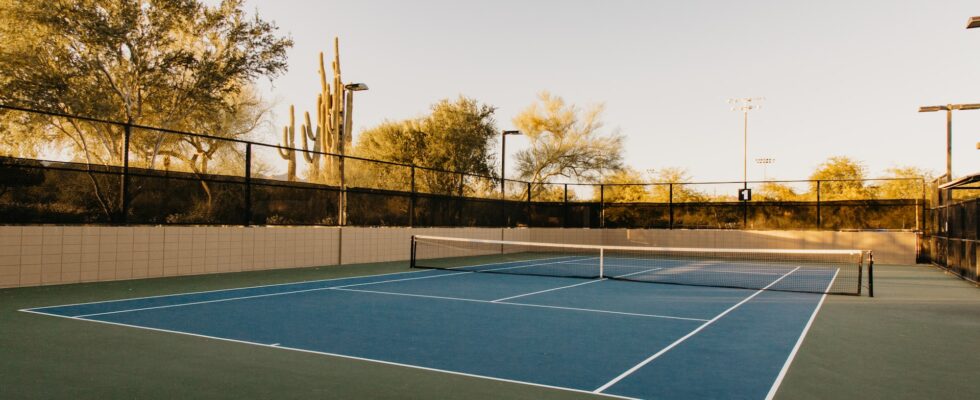If you’re one of those extremely fortunate people who has been able to get their own sports court installed at home, then you probably enjoy being able to just walk outside of your house and play a game of tennis whenever you want, as long as you have a family member or friend to play with. Of course the type of court surface you have will impact not only your playing style, like it does for the professionals, but also how often you can play.
The main sports surfaces that you are most likely to come across when it comes to tennis courts are, clay, natural grass, Artificial grass and Artificial hard courts. Each of them has their own benefits and disadvantages, some of which I will elaborate further on below.
Clay
Due to the texture of the surface clay courts are in fact one of, if not the slowest sports surface for the speed of the ball. This makes high bounce serves with topspin much easier to return, and thus can often lead to longer points. It is especially suited to defensive players who like to guard the baseline. What’s not so great is that you need to be accustomed to the slide into play, which often can take some time to learn and get right. This is also not ideal for people who have ankle injuries.
The other frustrating thing about clay is that it needs to be bagged and swept into a flat usable surface before each game, and sometimes even mid game.
Natural Grass
The original tennis court surface will definitely give you the Wimbledon feels, but is undeniably the hardest to maintain, hence the extensive maintenance team, who re-line, roll and mow the courts daily during the championship tournaments. It’s quite a soft surface which makes it easy on your knees and joints but it’s also important that this surface it treated gently when playing, to avoid causing the surface to become uneven, causing an uneven bounce. It can also be slippery when moisture is present, so watering it while necessary can also prevent safe play.
Artificial Grass
A great modern material which has been developed significantly over the last decade. Depending on the type of underlay and foundations you select you can cater for drainage, heat radiation, and impact absorption. This is just the start of some of the benefits of this material. Highly durable and with an expected lifespan over 15 years, there is nothing more than set and forget. Whenever you want to play it’s ready! It dries out quickly when it’s wet and is always nice and even. The only maintenance ever required is the removal of loose debris such as leaves, which is really no different to any other surface. The court can also easily be used for many other sports such as basketball, netball, futsal and so on.
Synthetic Hard Court
In terms of ball speed a hard court is always going to be the quickest. Most professionals will tell you that it’s actually best to use heavy duty tennis balls when playing on this surface as the felt will wear out quicker from the increased ball speed. Like Artificial grass maintenance is minimal, and only debris needs to be removed before play, however it will take sightly longer to dry out after it has been raining, and can sometimes be a little slippery when wet, depending on the age and quality of the court. It too can be used for many other court related sports, and should you play many sports such as basketball and netball regularly it might even be worth considering having the markings laid down for each in a different colour, in what is usually referred to as a multi-sports court. Of course having a court like this laid down will set you back a bit more than any of the other surfaces, which is probably it’s biggest drawback.
At the end of the day if you have a court already it’s not common that you will change the surface unless it is no longer in a state on which it can be played on. If that’s the case then you’ll likely know that whatever was there previously required too much maintenance for you and it’s best to pick a more durable surface for the future!


